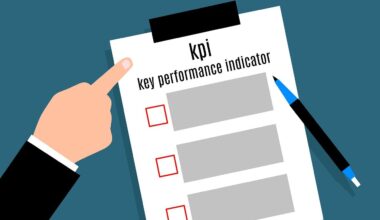The Interplay Between Market Sentiment and Technical Analysis
Market sentiment plays a pivotal role in shaping financial markets, influencing investor decisions, and determining asset prices. It is the collective attitude of investors towards a specific market or asset. Strong market sentiment can drive prices upwards, creating bullish trends, while negative sentiment can lead to bearish conditions. Understanding market sentiment is crucial for traders because it complements technical analysis, a methodology that uses historical price data to forecast future price movements. The interplay between sentiment and technical indicators can enhance trading strategies, providing clearer insights into market trends. Traders often rely on sentiment indicators, such as the Fear and Greed Index, to gauge market psychology. Integrating these insights with technical analysis enables investors to identify potential entry and exit points more effectively. Additionally, significant news events may shift sentiment dramatically, highlighting the need for real-time analysis. Utilizing both sentiment analysis and technical tools can foster a more holistic trading strategy, leading to better informed decision-making. Recognizing when sentiment diverges from technical signals can present unique trading opportunities, allowing traders to capitalize on market inefficiencies. Thus, understanding this relationship is essential for anyone engaged in financial markets.
The Role of Technical Indicators
Technical analysis relies heavily on a variety of indicators to assess market conditions and provide actionable insights for traders. Common indicators include Moving Averages, Relative Strength Index (RSI), and Bollinger Bands, each serving a distinct purpose in analyzing price movements. These technical tools help traders to visualize market trends, identify reversals, and determine potential support and resistance levels. While technical indicators analyze the price-based historical data, market sentiment provides a psychological backdrop. Understanding how these tools reflect the emotions driving market participants is crucial to grasp their true value. For instance, a high RSI reading indicates that an asset could be overbought, encouraging sentiment-driven traders to consider potential corrections. Conversely, when sentiment aligns with technical indicators, it can enhance the conviction of a buying or selling opportunity. Moreover, combining these perspectives creates a layer of confirmation that can be invaluable in making trading decisions. By integrating both technical analysis and an understanding of market sentiment, traders can mitigate risks and enhance their potential for profit. It ultimately fosters a comprehensive approach to trading, optimizing prospects in a complex financial environment.
Sentiment analysis can take many forms, but social media, news sentiment, and trader surveys are some of the most prevalent methods employed by traders and analysts. Social media platforms are increasingly being used to gauge public sentiment towards specific assets or the market as a whole. Tools that aggregate social media sentiment utilize Natural Language Processing techniques to interpret the overall mood from comments and discussions. Similarly, news sentiment analysis involves evaluating the tone and content of financial news articles, press releases, and announcements, determining whether they are perceived positively or negatively. Surveys, which ask traders about their feelings regarding market direction, can also provide insights into prevailing sentiment. Many traders implement these analytics alongside traditional technical analysis, which aids in the interpretation of price movement data. Additionally, specific assets often respond to sentiment shifts that can provide the catalyst for volatile price movements. When sentiment becomes overwhelmingly bullish or bearish, it can lead to significant price jumps or drops, showcasing the importance of monitoring market psychology. Thus, active traders can benefit greatly by incorporating sentiment analysis into their overall trading strategies.
The Impact of News on Sentiment
Major news events have a profound effect on market sentiment, often leading to immediate and pronounced changes in stock prices. Economic reports, geopolitical developments, or corporate earnings can shift investor sentiment substantially in a matter of moments. For example, a positive economic report may uplift sentiment across various sectors, encouraging investors to position for growth. Conversely, negative news can create widespread panic, driving prices down as traders rush to react. It’s crucial that market participants develop an awareness of how news impacts sentiment and subsequently, technical analysis. Following the news closely provides traders with vital context, especially when interpreting abrupt changes on charts or indicators. Technical analysis may signal one course of action, while market sentiment driven by news could suggest the opposite. The blend of news-driven sentiment with technical data can create a more nuanced understanding of market dynamics. For traders, remaining adaptable becomes essential as responses to news can vary significantly based on sentiment forks. This understanding allows traders to better prepare for potential volatility arising from significant announcements, strengthening overall strategy effectiveness.
Additionally, market sentiment can sometimes lead to price movements that do not align with fundamentals, illustrating the psychological aspects of trading. Overreaction to news or data releases can result in price swings that may not accurately reflect underlying asset value. Such situations often present opportunities for astute traders who can anticipate corrections as the market normalizes. Recognizing when sentiment has skewed can be critical for identifying potential buying or selling opportunities. Technical analysis can help identify these abnormalities, as prices may deviate from historical trends or key support and resistance levels. This misalignment offers a pathway for profitable trades if the trader can ascertain that the sentiment-driven price movement is excessive. Event-driven volatility can bring both increased risk and reward, necessitating a thoughtful approach using both sentiment and technical analysis. The cohesive use of these methodologies not only strengthens decision-making but allows traders to devise well-rounded strategies that account for both fundamental and psychological factors at play in the markets. As such, market participants must be vigilant in monitoring sentiment and technical trends for successful trading.
Understanding Market Psychology
Understanding market psychology is essential for navigating the complex world of trading. Market participants often act based on emotions such as fear, greed, and euphoria, which can significantly influence price behaviors. This emotional response can lead to inefficiencies in the market, with prices deviating from their intrinsic values. Traders who can empathize with these psychological factors often gain an edge over their competition. For example, during a bull market, fear of missing out (FOMO) can drive traders to enter positions too late, whereas in bear markets, fear can lead to premature selling. Recognizing these tendencies allows traders to better align their strategies with prevailing mood shifts. Integrating market sentiment into technical analysis provides a balanced perspective, allowing traders to decode trends that might otherwise be obscured by rampant emotions. By understanding why trends form and the psychology behind them, traders can better position themselves for profit. More importantly, cultivating emotional discipline remains a key trait for successful trading, enabling participants to act rationally rather than react emotionally during market turbulence. Emphasizing this understanding creates a pathway for sustainable trading success.
Ultimately, the dynamics between market sentiment and technical analysis are essential for creating a comprehensive trading strategy. Traders who neglect sentiment analysis risk making decisions based solely on historical data, potentially missing key psychological undercurrents. By exploring market sentiment alongside technical indicators, traders gain fuller insights, informing a more robust decision-making process. Adopting this dual approach equips investors with the tools needed to interpret and act on both price data and emotional behavior. Furthermore, as the financial landscape evolves, new tools and methods will continue to emerge, enhancing sentiment analysis capabilities. Investing time in cultivating these skills ensures market participants remain adaptable in an ever-changing environment. Creating a well-rounded toolkit that includes both sentiment and technical analysis deepens overall understanding of market behavior. Leveraging varied aspects of market analysis not only aids traders in identifying opportunities but fosters sustainable practices built on thoughtful evaluation. Hence, a thorough grasp of the interplay between market sentiment and technical analysis is critical for thriving in financial markets today, allowing traders to take calculated risks based on precision information. Such insights will empower traders to navigate and leverage market conditions more successfully.


